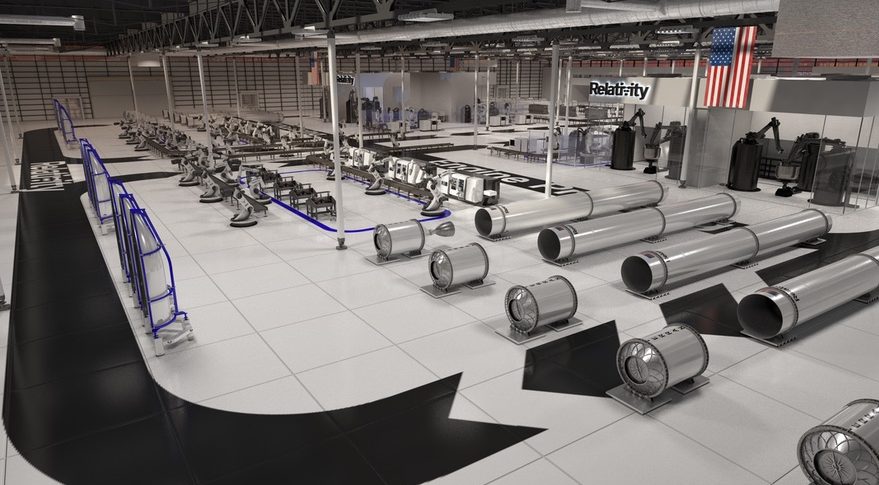Relativity to Build Factory for 3D-Printed Rockets at NASA's Stennis Space Center

WASHINGTON — Small launch vehicle developer Relativity announced June 11 it will establish a production facility for its Terran 1 rocket at NASA's Stennis Space Center.
Under an agreement with NASA and the Mississippi Development Authority, Relativity will lease the 20,000-square-meter Building 9101 at Stennis for nine years, with an option to extend the lease 10 years. The lease comes at what the company calls "significantly discounted terms," the specifics of which it did not disclose.
Mississippi Development Authority, an economic development agency, will provide a cost reimbursement and tax incentive package to the company for establishing the factory there. Relativity has committed to invest $59 million in the state and grow its workforce there from the current 10 employees to 200 within five years.
The ability to take over an existing facility, which includes a high bay nearly 25 meters high and multiple bridge cranes, was a key factor in selecting Stennis. "The facility was available and we're getting it at close to no cost," said Tobias Duschl, vice president of operations at Relativity, in an interview. "The industrial infrastructure that the facility provides is really hard to find anywhere else."
Another factor was that Relativity current tests its rocket engines at Stennis on stands just a few kilometers from the building. "The advantage of being by the test site is that there's usually a faster iteration and test loop between the test site and the manufacturing," said Tim Ellis, chief executive and co-founder of Relativity.
When built out, Relativity foresees having a production line at that Stennis factory that can produce between 12 and 24 rockets a year. The company makes extensive use of additive manufacturing, or 3-D printing, to produce the rockets, which lowers production time. Duschl said he expected it to take three to five years for that production line to fully operational, although the company plans to start moving into the building immediately.
Relativity is based in Los Angeles, and plans to also expand its facilities there to work on development of the rocket. "There's a lot of moving pieces for us," Duschl said.
Get the Space.com Newsletter
Breaking space news, the latest updates on rocket launches, skywatching events and more!
Relativity’s decision to expand at Stennis was warmly welcomed by officials there. "Relativity is a valuable member of the Stennis federal city and we look forward to building on our already successful partnership," Rick Gilbrech director of Stennis, said in a statement. "This is a significant expansion of their presence at Stennis and we appreciate their confidence in making south Mississippi an integral part of their future."
"The Mississippi Gulf Coast has a strong aerospace presence, and Relativity's expansion at Stennis further positions our state as a leader in this prominent sector," said the state's governor, Phil Bryant, in that statement.
While the company sets up that factory, it's continuing development of the Terran 1. Ellis said the company is planning a test of the rocket’s second stage at Stennis this year, keeping the vehicle on schedule for a first launch from Cape Canaveral by the end of 2020.
- Read SpaceNews for the Latest Space Industry News
- Rocket Lab Announces Date, Payloads for Satellite Rideshare Launch
- Space Launch Startup Rocket Lab Is Building Satellites Now, Too
This story was provided by SpaceNews, dedicated to covering all aspects of the space industry.
Join our Space Forums to keep talking space on the latest missions, night sky and more! And if you have a news tip, correction or comment, let us know at: community@space.com.

Jeff Foust is a Senior Staff Writer at SpaceNews, a space industry news magazine and website, where he writes about space policy, commercial spaceflight and other aerospace industry topics. Jeff has a Ph.D. in planetary sciences from the Massachusetts Institute of Technology and earned a bachelor's degree in geophysics and planetary science from the California Institute of Technology. You can see Jeff's latest projects by following him on Twitter.










